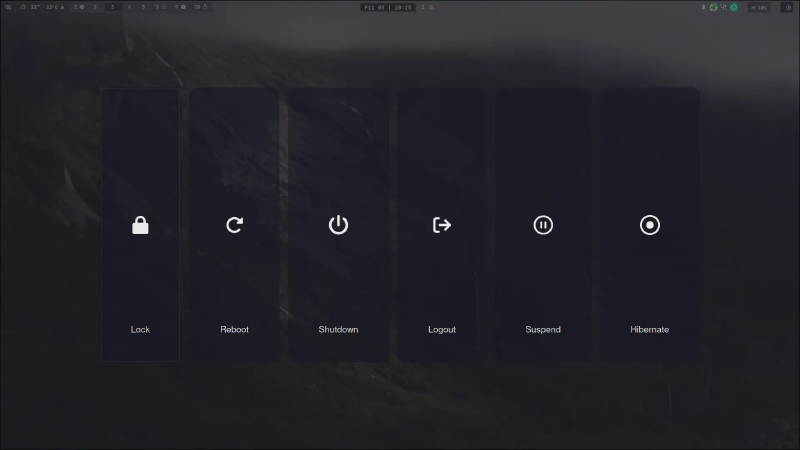In this post, I’ll show how to setup hibernation on Linux (using Arch as example), with zram and swapfile together.
Why combine them?
- zram: great for everyday use → faster, avoids writing to disk. (comes with the default Arch install)
- swapfile: required for hibernation, since you need a persistent swap that survives power-off.
What is Hibernation
Hibernation saves the entire contents of RAM to the swap area on disk and then powers the system off completely. When you turn the laptop back on, the kernel reloads that memory image, restoring your session exactly where you left it. It uses no power while off, but takes a bit longer to resume compared to sleep.
Diff between Sleep and Hibernation
-
Sleep (Suspend to RAM):
- Keeps data in RAM with low power consumption. The system wakes up quickly, but will lose its state if power is lost.
-
Hibernation (Suspend to Disk):
- Stores RAM contents to disk and fully powers down. Consumes no power while off, and the session can survive battery drain or shutdown, but resuming is slower.
Why Hibernation doesn’t destroy your SSD/NVME
Hibernate does write a lot at once (it dumps all RAM to swap), but it’s not continuous.
If you hibernate a few times per day, your drive’s wear is negligible compared to its rated endurance. A consumer NVMe often has 300–600 TBW.
Even if you had 16 GiB RAM and hibernated every single hour, you’d write ~384 GiB per day → ~140 TB per year. That’s still within warranty for years — and in practice, you won’t hibernate that often.
Setup Hibernation on Linux
Note: I use
rg(ripgrep) as a faster alternative togrepin my commands. If you don’t haverginstalled, you can substitutegrepfor similar results.
Check kernel support
Run the following command:
|
|
and check if disk is listed.
Check Swap
Hibernation needs enough swap space to store the content of your RAM. Check your swap size with:
|
|
Swapfile vs Swap Partition
There is two ways to create swap: a swapfile or a dedicated swap partition.
Swapfile:
- Easy to set up, flexible size.
- Perfectly fine on NVMe (use fallocate or dd).
Swap partition:
- Slightly lower overhead.
- Required only if you want maximum performance or use encrypted setups with special constraints.
- Harder to resize.
For hibernation, both work equally well (as long as you configure resume and resume_offset properly).
If you hibernate rarely (say, once or twice a day, or just occasionally): Swapfile on NVMe is totally fine.
If you plan to hibernate many times per hour and leave the laptop running for years → maybe consider a partition. But honestly, that’s overkill.
Setup swapfile
Decide swapfile size
You have 15 GiB RAM, so make the swapfile at least 16 GiB.
More is okay (RAM size + 10–20% is safe).
- Create the swapfile:
|
|
- Check:
|
|
Should show ~16G or your chosen size
- Enable the swapfile:
|
|
- Make it permanent:
|
|
- Verify:
|
|
Find resume offset
For swapfile, you need to find the resume offset (the block where the swapfile starts on disk). Run:
|
|
You should see output like:
|
|
E.g., 16601088 is your offset.
Update kernel parameters
I’ll do with GRUB, but if you use another bootloader, adapt accordingly.
First check your root device:
|
|
It might show something like /dev/nvme0n1p2 or /dev/sda2.
Edit your bootloader /etc/default/grub and add the following line to the GRUB_CMDLINE_LINUX_DEFAULT:
With your root device and the found resume offset.
|
|
Example (append to your existing line):
|
|
Rebuild the bootloader config:
|
|
Add resume hook
Edit /etc/mkinitcpio.conf → in HOOKS=(), add resume before filesystems.
Example:
|
|
Rebuild initramfs:
|
|
Test hibernation
Make sure to save all work before testing. Run:
|
|
On reboot look for messages about resuming from swap.
|
|
Example output:
|
|
Troubleshooting
If hibernation doesn’t work:
- Ensure swap is at least as large as your RAM.
- Double-check the resume device and offset in GRUB.
- Run
journalctl -bafter a failed boot to see errors. - For more help, check the Arch Wiki on Hibernation.
That’s it! Now you can hibernate your Linux system confidently.
